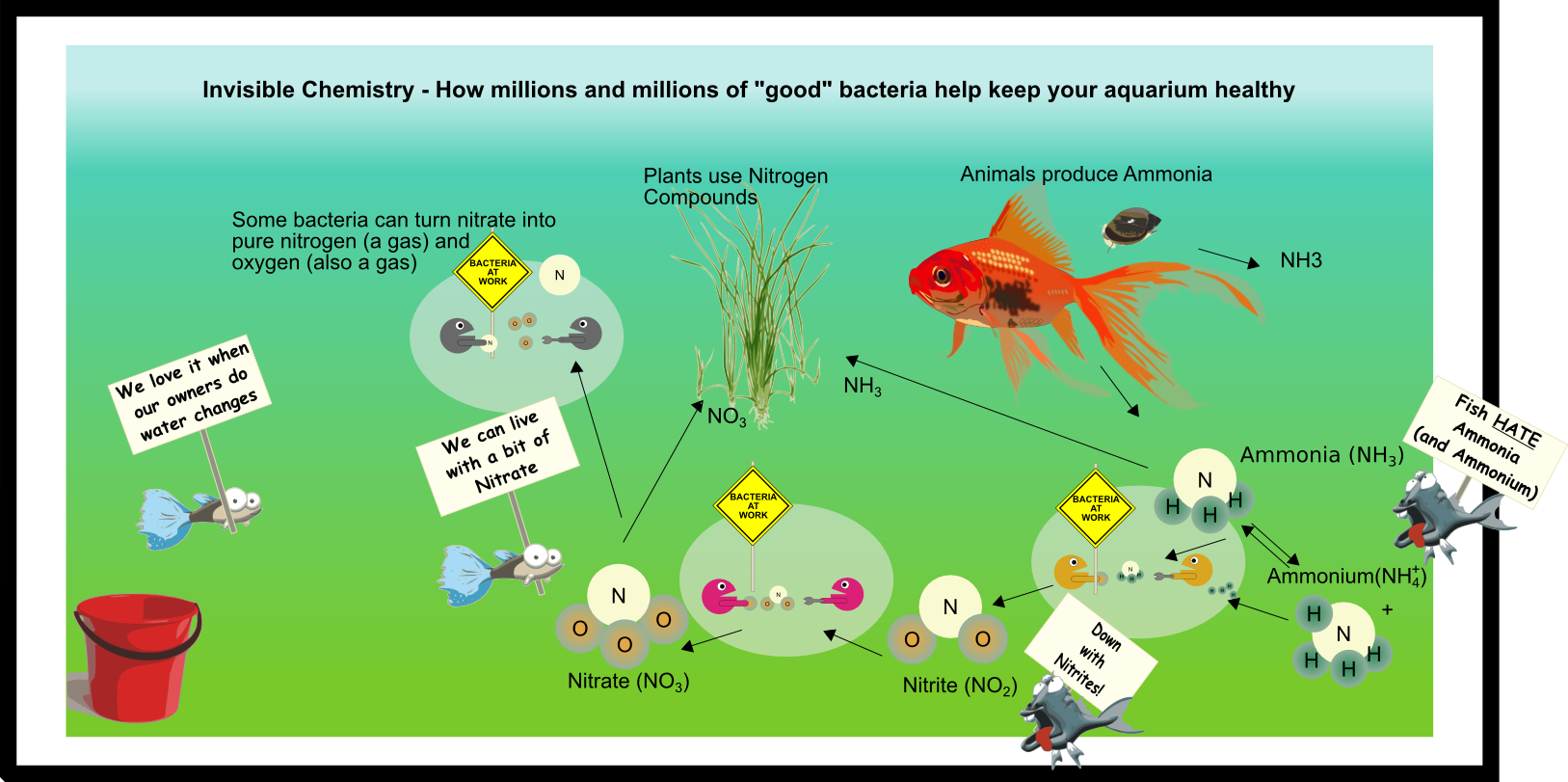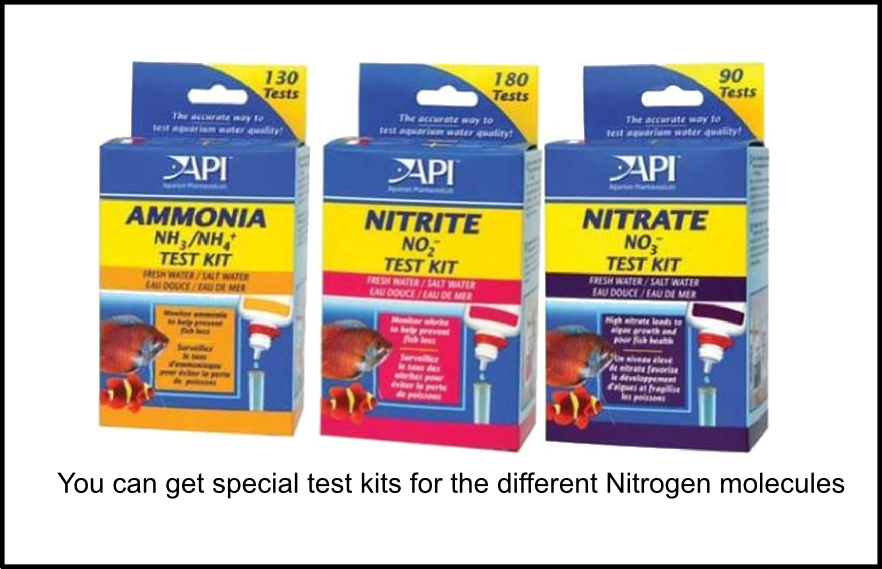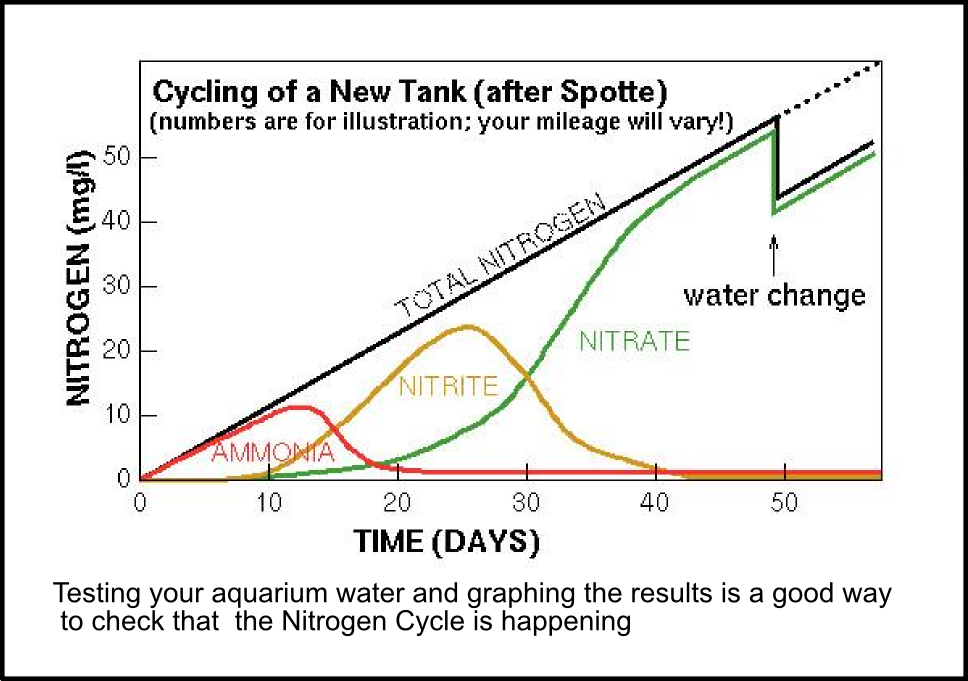The Invisible Chemistry of Nitrogen
The chemical element Nitrogen (N) is essential for life - it is part of almost every molecule in every organism. Nitrogen combines with may other chemical elements to form different molecules.
Some Nitrogen-containing molecules can be toxic. Animals can't live in an environment where there is too much Nitrogen in the form of the molecules called Ammonia (NH3), Ammonium (NH4) and Nitrites (NO2). Animal waste (urine and poo) has a lot of Nitrogen in the form of Ammonia or another nitrogen molecule called Urea. Animals can cope better if the Nitrogen is converted into molecules called Nitrates (NO3) – but even they can be poisonous in high enough concentrations.
Fortunately there are bacteria that convert these poisonous chemicals to more harmless ones and "cycle" all this Nitrogen through the earth's living and non-living systems. This "nitrogen cycle" makes life possible o earth and it is going on all around us all the time in soil and water.
It is VERY important to have this "cycling" going on in an aquarium. Otherwise the poisonous forms of Nitrogen - Ammonia, Ammonium and Nitrite - would accumulate kill our fish and other animals. Nitrogen comes into the aquarium in the form of food for your fish and other animals. Some of it gets used in the growth of those animals but a lot does get excreted as urine and poo.
Several different types of bacteria are involved the Nitrogen Cycle. Some take the Ammonia (the main form of Nitrogen in fish waste) and convert it into Nitrites. Another group of bacteria take these Nitrites and convert them into Nitrates.

Plants in an aquarium also help by taking up Ammonia and other forms of Nitrogen to build their own tissues. But unless your aquarium is chock-a-block full of fast growing plants and only has a few fish and other animals, this probably won't be enough to stop the build-up of some Nitrogen. Water changes help to dilute the Nitrogen (Nitrates) in the water.
There are also bacteria that can break apart the Nitrates to make pure Nitrogen (a gas) and Oxygen (also a gas) but it is difficult to grow enough of these “nitrifying” bacteria in an aquarium system.
The main way that aquarium keepers help to look after the nitrogen cycle are:
 You can get test kits for the different Nitrogen molecules important in aquariums – Ammonia, Nitrite and Nitrate. Testing the water is a particularly good way to follow the establishment of the nitrogen cycle in a new aquarium and can also be useful in diagnosing any problems.
You can get test kits for the different Nitrogen molecules important in aquariums – Ammonia, Nitrite and Nitrate. Testing the water is a particularly good way to follow the establishment of the nitrogen cycle in a new aquarium and can also be useful in diagnosing any problems.
When a tank is first set up and doesn't yet have the colonies of bacteria it needs, there will be a slow build-up of Ammonia, usually because the fish-keeper has added some food or a piece of fish meat to start the “cycle”. As the bacteria in the filter get going, they covert this Ammonia to Nitrite and when there is enough Nitrite, different bacteria come in and convert it to Nitrate. If you are testing the water every few days and graph the results, you will see this happening – Ammonia will rise first and then fall, Nitrites will rise as Ammonia levels fall and, finally Nitrates will rise as both Ammonia and Nitrates fall to (almost) zero. Fishkeepers would then say that their tank had “cycled”. You can then do a water change and add your fish.

More about Nitrogen, Ammonia etc
"Establishing" a New Aquarium
Ammonia in the freshwater aquarium
Some Nitrogen-containing molecules can be toxic. Animals can't live in an environment where there is too much Nitrogen in the form of the molecules called Ammonia (NH3), Ammonium (NH4) and Nitrites (NO2). Animal waste (urine and poo) has a lot of Nitrogen in the form of Ammonia or another nitrogen molecule called Urea. Animals can cope better if the Nitrogen is converted into molecules called Nitrates (NO3) – but even they can be poisonous in high enough concentrations.
Fortunately there are bacteria that convert these poisonous chemicals to more harmless ones and "cycle" all this Nitrogen through the earth's living and non-living systems. This "nitrogen cycle" makes life possible o earth and it is going on all around us all the time in soil and water.
It is VERY important to have this "cycling" going on in an aquarium. Otherwise the poisonous forms of Nitrogen - Ammonia, Ammonium and Nitrite - would accumulate kill our fish and other animals. Nitrogen comes into the aquarium in the form of food for your fish and other animals. Some of it gets used in the growth of those animals but a lot does get excreted as urine and poo.
Several different types of bacteria are involved the Nitrogen Cycle. Some take the Ammonia (the main form of Nitrogen in fish waste) and convert it into Nitrites. Another group of bacteria take these Nitrites and convert them into Nitrates.

Plants in an aquarium also help by taking up Ammonia and other forms of Nitrogen to build their own tissues. But unless your aquarium is chock-a-block full of fast growing plants and only has a few fish and other animals, this probably won't be enough to stop the build-up of some Nitrogen. Water changes help to dilute the Nitrogen (Nitrates) in the water.
There are also bacteria that can break apart the Nitrates to make pure Nitrogen (a gas) and Oxygen (also a gas) but it is difficult to grow enough of these “nitrifying” bacteria in an aquarium system.
The main way that aquarium keepers help to look after the nitrogen cycle are:
- Using filters that have a lot of surface area (places where the microscopic bacteria can live)
- Giving filters time to establish good colonies of bacteria before putting animals into a new aquarium (this is often called “cycling the filter”)
- Having some plants in the aquarium to help take up Ammonia and Nitrates from the water;
- Keeping their tanks “clean:, by removing dead animals or plants (which break down to give off ammonia) and any fish poo that accumulates; and
- Changing some of the water in the tank every couple of weeks – this helps to dilute the nitrates
 You can get test kits for the different Nitrogen molecules important in aquariums – Ammonia, Nitrite and Nitrate. Testing the water is a particularly good way to follow the establishment of the nitrogen cycle in a new aquarium and can also be useful in diagnosing any problems.
You can get test kits for the different Nitrogen molecules important in aquariums – Ammonia, Nitrite and Nitrate. Testing the water is a particularly good way to follow the establishment of the nitrogen cycle in a new aquarium and can also be useful in diagnosing any problems.When a tank is first set up and doesn't yet have the colonies of bacteria it needs, there will be a slow build-up of Ammonia, usually because the fish-keeper has added some food or a piece of fish meat to start the “cycle”. As the bacteria in the filter get going, they covert this Ammonia to Nitrite and when there is enough Nitrite, different bacteria come in and convert it to Nitrate. If you are testing the water every few days and graph the results, you will see this happening – Ammonia will rise first and then fall, Nitrites will rise as Ammonia levels fall and, finally Nitrates will rise as both Ammonia and Nitrates fall to (almost) zero. Fishkeepers would then say that their tank had “cycled”. You can then do a water change and add your fish.

More about Nitrogen, Ammonia etc
"Establishing" a New Aquarium
Ammonia in the freshwater aquarium
